wonderful garden plant – Lavender
by Diane - October 23rd, 2013.Filed under: Crocus.
Lots of types of lavender. Fill your garden with this lovely plant. Great winter colour from the pale thin leaves, beautiful summer flowers and fragrance, and you can cut the flower stems to make lavender bags.
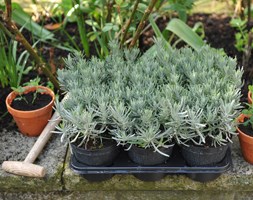
Lavandula angustifolia (lavender promotion – 6 pack) £24.99
Position: full sun Soil: moderately fertile, well-drained soil Rate of growth: average Flowering period: July to September Flower colour: pale to deep purple Other features: the aromatic flowers and leaves can be used for making pot-pourri Hardiness: fully hardy Dense spikes of fragrant, pale to deep purple flowers appear in summer above the mounds of steely, grey-green foliage. This English lavender makes a fabulous informal hedge and is perfect for a sunny, well-drained site. The fragrant flower-spikes are highly attractive to bees and other beneficial insects. Garden care: Cut back the stalks after the flowers have faded. Carefully trim back in April, taking care not to cut into old wood.
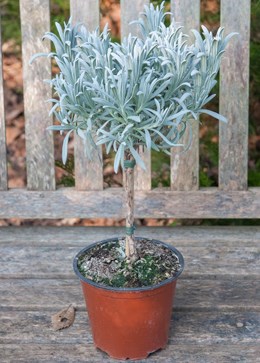
Lavandula angustifolia ‘mini stem standard’ (lavender mini-standard) £14.99
Position: full sun Soil: moderately fertile, well-drained soil Rate of growth: average Flowering period: July to September Hardiness: fully hardy Lavenders are universally loved. They have aromatic foliage, that will release its delicious scent each time it is brushed against and rich purple, summer flowerspikes that attract bees, look good in both fresh and dried arrangements and make excellent additions to pot pourri. It is growing in a 3 litre pot and trained as mini-standard. They will look great when potted up and placed on a sunny patio. Garden care: Cut back the stalks after the flowers have faded. Carefully trim back in April, taking care not to cut into old wood.
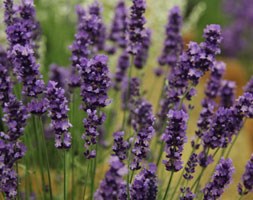
Lavandula angustifolia ‘Hidcote’ (lavender Hidcote promotion – 6 pack) £14.97
Position: full sun Soil: moderately fertile, well-drained soil Rate of growth: average Flowering period: July to September Hardiness: fully hardy A compact form of the popular English lavender, named after plantsman Laurence Johnston’s famous Arts and Crafts garden in Gloucestershire. It produces dense spikes of fragrant, deep violet summer flowers above slender, aromatic, silvery-grey leaves. It is possibly the best lavender for edging paths and borders and the aromatic foliage perfumes the air if you brush against it. It also works well in a gravel garden, or clipped into a formal sphere for a contemporary look. The flower-spikes are highly attractive to bees and other nectar-loving insects. Garden care: Cut back the stalks after the flowers have faded. Carefully trim back in April, taking care not to cut into old wood.
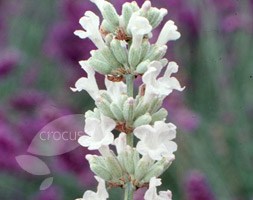
Lavandula angustifolia ‘Arctic Snow’ (lavender) £11.99
Position: full sun Soil: moderately fertile, well-drained soil Rate of growth: average Flowering period: July to September Hardiness: fully hardy Dense spikes of pure white, fragrant flowers appear in late summer which shine out among aromatic, grey-green leaves. This is a compact variety of English lavender that makes a gorgeous, informal flowering hedge, especially for edging a path and border, and brushing against it releases its heady fragrance. The flower-spikes are highly attractive to bees and other beneficial insects. Garden care: Cut back the stalks after the flowers have faded to retain a compact shape. Carefully trim back in April, taking care not to cut into old wood.
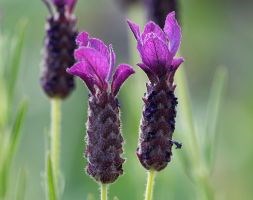
Lavandula ‘Regal Splendour’ (PBR) (French lavender) £9.99
Position: full sun Soil: moderately fertile, well-drained soil Rate of growth: average Flowering period: April to May Hardiness: borderline hardy (may need winter protection) From fat round flowerheads, delicate, upright flags emerge like butterfly wings and flutter in the breeze among grey-green aromatic leaves. This French lavender has dark purple flowers and looks wonderful planted en masse in a protected, sunny border where its heady fragrance can be enjoyed. Like most French lavenders, it is earlier flowering than its English cousins, but associates well with them if you want to prolong the season of lavender in your garden. The flower-spikes are also a magnet for bees and other nectar-loving insects. As it’s borderline hardy it is best grown in a container in colder areas of the country and should be over-wintered in a cool greenhouse or conservatory. Garden care: Cut back the stalks after the flowers have faded to retain a compact shape. Carefully trim back in April, taking care not to cut into old wood.

Lavandula ‘Willow Vale’ (lavender) £9.99
Position: full sun Soil: moderately fertile, well-drained soil Rate of growth: average Flowering period: June and July Flower colour: purple Other features: the aromatic flowers and leaves can be used for making pot-pourri Hardiness: borderline hardy (may need winter protection) This French lavender makes a stunning, informal flowering hedge for a sunny, protected site. In frost-prone areas it is best grown as a pot-plant and over-wintered indoors. It has crinkly edged foliage and lovely, long, pale lavender flags. Garden care: Cut back the stalks after the flowers have faded. Carefully trim back in April, taking care not to cut into old wood.
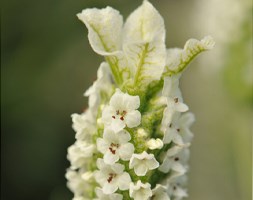
Lavandula stoechas subsp. stoechas f. leucantha ‘Snowman’ (white French lavender) £8.99
Position: full sun Soil: moderately fertile, well-drained soil Rate of growth: average Flowering period: June and July Hardiness: borderline hardy (may need winter protec tion) As the name suggests, this French lavender has spikes of pure white flowers, topped with distinctive white, butterfly-like tufts from late spring to summer and grey-green, aromatic leaves. It makes a striking feature planted en masse as a fragrant edging for a sunny, protected border, along a path or in a container. Like most French lavenders, this is earlier flowering than its English cousins, but associates well with them if you want to prolong the season of lavender in your garden. The flower-spikes are also a magnet for bees and other beneficial insects. In frost-prone areas it is best grown in a large container and over-wintered indoors. As it’s borderline hardy it is best grown in a container in colder areas of the country and should be over-wintered in a cool greenhouse or conservatory. Garden care: Cut back the stalks after the flowers have faded to retain a compact shape. Carefully trim back in April, taking care not to cut into old wood.
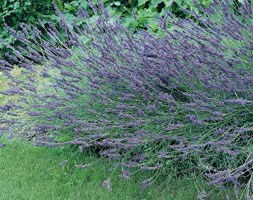
Lavandula x intermedia ‘Grosso’ (lavender) £8.99
Position: full sun Soil: moderately fertile, well-drained soil Rate of growth: vigorous Flowering period: July to August Hardiness: fully hardy This vigorous English lavender produces masses of long, slender stems, that are topped with clusters of vivid violet flowers between July and August, above mounds grey-green leaves. It makes a gorgeous, flowering, informal hedge, especially along a path, where its fabulous fragrance can best be appreciated. It works well in a Mediterranean garden, or clipped into a formal sphere for a contemporary look. The highly scented flower-spikes are also a magnet for bees and other nectar-loving insects. Garden care: Cut back the stalks after the flowers have faded to retain a compact shape. Carefully trim back in April, taking care not to cut into old wood.

Lavandula angustifolia ‘Rosea’ (lavender) £8.99
Position: full sun Soil: moderately fertile, well-drained soil Rate of growth: average Flowering period: July to September Hardiness: fully hardy Dense spikes of fragrant, rose-pink flowers appear in summer above slender, steely, grey-green foliage. It makes a gorgeous, flowering, informal hedge, especially along a path, where its fragrance can be appreciated. It also works well in a gravel garden, or clipped into a formal sphere for a contemporary look. The cloud-like effect of its soft pink flowers means it looks particularly good with roses, or as part of a cottage garden scheme. The flower-spikes are highly attractive to bees and other beneficial insects. Garden care: Cut back the stalks after the flowers have faded. Carefully trim back in April, taking care not to cut into old wood.

Lavandula pedunculata subsp. pedunculata (French lavender (syn. Papillon)) £8.99
Position: full sun Soil: moderately fertile, well-drained soil Rate of growth: average Flowering period: June and July Hardiness: borderline hardy (may need winter protection) From fat round flowerheads, delicate, upright petals emerge like butterfly wings and flutter in the breeze among grey-green, aromatic leaves. This French lavender has pale mauve flowers and looks wonderful planted en masse in a protected, sunny border where its heady fragrance can be enjoyed. Like most French lavenders, it is earlier flowering than its English cousins, but associates well with them if you want to prolong the season of lavender in your garden. The flower-spikes are also a magnet for bees and other nectar-loving insects. As it’s borderline hardy it is best grown in a container in colder areas of the country and should be over-wintered in a cool greenhouse or conservatory. Garden care: Cut back the stalks after the flowers have faded to retain a compact shape. Carefully trim back in April, taking care not to cut into old wood.
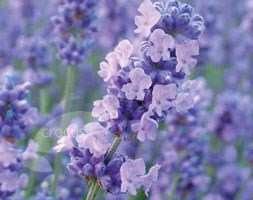
Lavandula angustifolia Melissa Lilac (‘Dow4’) (PBR) (lavender) £8.99
Position: full sun Soil: moderately fertile, well-drained soil Rate of growth: average Flowering period: July to September Hardiness: fully hardy Stunning, large, lilac-coloured, fragrant flower spikes appear in summer above slender, aromatic, silvery-grey leaves. This is a lovely lavender for edging paths and borders; the aromatic foliage perfumes the air if you brush against it. It also works well in a gravel garden, or clipped into a formal sphere for a contemporary look. The flower-spikes are highly attractive to bees and other beneficial insects. Garden care: Cut back the stalks after the flowers have faded. Carefully trim back in April, taking care not to cut into old wood.

Lavandula ‘Helmsdale’ (PBR) (French lavender) £8.99
Position: full sun Soil: moderately fertile, well-drained soil Rate of growth: average Flowering period: May to July Flower colour: burgundy purple Other features: the aromatic flowers and leaves can be used for making pot-pourri Hardiness: borderline hardy (may need winter protection) Compact bushy shrub with aromatic grey-green leaves and broad spikes of fragrant burgundy purple flowers topped by purple bracts. This gorgeous French lavender makes a neat, compact edging for a sunny path or border. In frost-prone areas, grow in a container and over-winter in a cool greenhouse or conservatory. Garden care: Cut back the stalks after the flowers have faded. Carefully trim back in April, taking care not to cut into old wood.
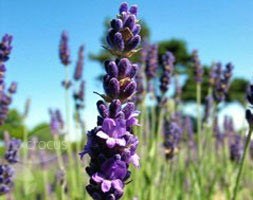
Lavandula angustifolia ‘Elizabeth’ (lavender) £8.99
Position: full sun Soil: moderately fertile, well-drained soil Rate of growth: average Flowering period: July to September Hardiness: fully hardy A new variety, with dense spikes of shocking violet flowers in late summer that shine out among aromatic, silvery-grey leaves. It’s fairly compact, so makes a gorgeous, informal flowering hedge, especially for edging a path and border, and brushing against it releases its heady fragrance. The flower-spikes are highly attractive to bees and other beneficial insects. Garden care: Cut back the stalks after the flowers have faded to retain a compact shape. Carefully trim back in April, taking care not to cut into old wood.
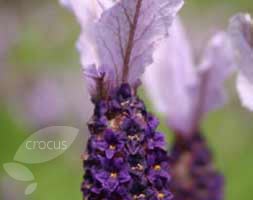
Lavandula Rocky Road (‘Fair 09’) (PBR) (French lavender) £8.99
Position: full sun Soil: moderately fertile, well-drained soil Rate of growth: average Flowering period: June to July Hardiness: borderline hardy (may need winter protection) A stunning new French lavender, with grey-green, aromatic leaves and fat flowerheads studded with tiny purple flowers, from which delicate, pink, upright flags emerge like butterfly wings and flutter in the breeze. It has a compact, upright habit, which makes it particularly good for small gardens. It looks wonderful planted en masse in a protected, sunny border where its heady fragrance can be enjoyed, or in a container. Like most French lavenders, it is earlier flowering than its English cousins, but associates well with them if you want to prolong the season of lavender in your garden. The flower-spikes are also a magnet for bees and other nectar-loving insects. In frost-prone areas it is best grown in a large container and over-wintered indoors. Garden care: Cut back the stalks after the flowers have faded to retain a compact shape. Carefully trim back in April, taking care not to cut into old wood.
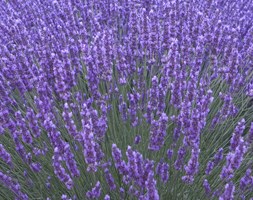
Lavandula angustifolia ‘Munstead’ (lavender) £7.99
Position: full sun Soil: moderately fertile, well-drained soil Rate of growth: average Flowering period: July to September Hardiness: fully hardy A compact lavender, named after Gertrude Jekyll’s garden at Munstead Wood. It produces dense spikes of fragrant, bluish-purple summer flowers above slender, aromatic, grey-green leaves. This is a lovely lavender for edging paths and borders; the aromatic foliage perfumes the air if you brush against it. It also works well in a gravel garden, or clipped into a formal sphere for a contemporary look. The flower-spikes are highly attractive to bees and other nectar-loving insects. Garden care: Cut back the stalks after the flowers have faded. Carefully trim back in April, taking care not to cut into old wood.
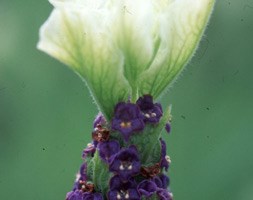
Lavandula ‘Tiara’ (French lavender) £5.99
Position: full sun Soil: moderately fertile, well-drained soil Rate of growth: average Flowering period: May to July Flower colour: blue with creamy-white flags Other features: highly aromatic flowers and leaves which can be used for making pot-pourri Hardiness: borderline hardy (may need protection in colder areas) Unusual spikes of large blue flowerheads topped with creamy-white flags throughout spring and summer, and aromatic silvery-grey leaves. An exciting new introduction to the French lavender range which has a compact yet upright habit, making it perfect for all gardens and in particular patio pots. As it’s borderline hardy it is best grown in a container in colder areas of the country and should be over-wintered in a cool greenhouse or conservatory. Garden care: Cut back the stalks after the flowers have faded. Avoid early spring pruning as flowers will be delayed. Keep dry during the winter
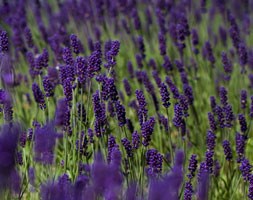
Lavandula angustifolia ‘Hidcote’ (lavender) £5.99
Position: full sun Soil: moderately fertile, well-drained soil Rate of growth: average Flowering period: July to September Hardiness: fully hardy A compact form of the popular English lavender, named after plantsman Laurence Johnston’s famous Arts and Crafts garden in Gloucestershire. It produces dense spikes of fragrant, deep violet summer flowers above slender, aromatic, silvery-grey leaves. It is possibly the best lavender for edging paths and borders and the aromatic foliage perfumes the air if you brush against it. It also works well in a gravel garden, or clipped into a formal sphere for a contemporary look. The flower-spikes are highly attractive to bees and other nectar-loving insects. Garden care: Cut back the stalks after the flowers have faded. Carefully trim back in April, taking care not to cut into old wood.
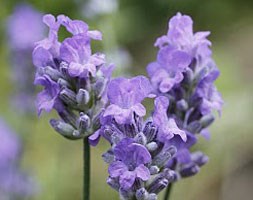
Lavandula angustifolia ‘Blue Cushion’ (Lavender) £4.99
Position: full sun Soil: moderately fertile, well-drained soil Rate of growth: average Flowering period: July to September Hardiness: fully hardy Blue-green foliage forms compact, cushion-like mounds that are topped with a profusion of upright flowerspikes for several months from midsummer. The rich blue flowers are extremely attractive to bees and butterflies, make pretty additions to posies and can be dried for pot pourri. Useful for creating a low hedge, providing year-round interest in a mixed border or potting up on a sunny patio. Similar to ‘Munstead’, but with a much more compact habit. Garden care: Cut back the stalks after the flowers have faded. Carefully trim back again in April, taking care not to cut into old wood.
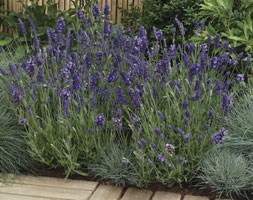
Lavandula angustifolia ‘Ellagance Purple’ (lavender) £4.99
Position: full sun Soil: moderately fertile, well-drained soil Rate of growth: average Flowering period: July to September Other features: grey-green, aromatic leaves Hardiness: fully hardy Appearing in profusion, the deep purple-blue flowers put on a marvelous display and are very attractive to bees and other pollinating insects. An outstanding performer in the border or gravel garden, it will also make a handsome addition to the patio when grown in a pot. Garden care: Cut back the stalks after the flowers have faded. Carefully trim back in April, taking care not to cut into old wood.
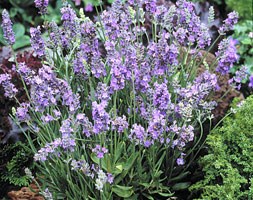
Lavandula angustifolia ‘Ellagance Sky’ (lavender) £4.99
Position: full sun Soil: moderately fertile, well-drained soil Rate of growth: average Flowering period: July to September Other features: grey-green, aromatic leaves Hardiness: fully hardy Dense, rounded mounds of glaucous green foliage are topped with strong stems bearing pale violet-blue flowers. It looks impressive when planted en masse, but to take full advantage of the flowers scent, it is best planted near an entranceway or seating area. Garden care: Cut back the stalks after the flowers have faded. Carefully trim back in April, taking care not to cut into old wood.
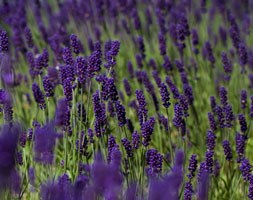
Lavandula angustifolia ‘Hidcote’ (lavender) £4.99
Position: full sun Soil: moderately fertile, well-drained soil Rate of growth: average Flowering period: July to September Hardiness: fully hardy A compact form of the popular English lavender, named after plantsman Laurence Johnston’s famous Arts and Crafts garden in Gloucestershire. It produces dense spikes of fragrant, deep violet summer flowers above slender, aromatic, silvery-grey leaves. It is possibly the best lavender for edging paths and borders and the aromatic foliage perfumes the air if you brush against it. It also works well in a gravel garden, or clipped into a formal sphere for a contemporary look. The flower-spikes are highly attractive to bees and other nectar-loving insects. Garden care: Cut back the stalks after the flowers have faded. Carefully trim back in April, taking care not to cut into old wood.

Lavandula angustifolia ‘Munstead’ (lavender) £4.99
Position: full sun Soil: moderately fertile, well-drained soil Rate of growth: average Flowering period: July to September Hardiness: fully hardy A compact lavender, named after Gertrude Jekyll’s garden at Munstead Wood. It produces dense spikes of fragrant, bluish-purple summer flowers above slender, aromatic, grey-green leaves. This is a lovely lavender for edging paths and borders; the aromatic foliage perfumes the air if you brush against it. It also works well in a gravel garden, or clipped into a formal sphere for a contemporary look. The flower-spikes are highly attractive to bees and other nectar-loving insects. Garden care: Cut back the stalks after the flowers have faded. Carefully trim back in April, taking care not to cut into old wood.
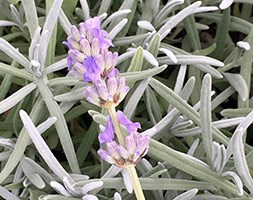
Lavandula angustifolia (lavender) £4.99
Position: full sun Soil: moderately fertile, well-drained soil Rate of growth: average Flowering period: July to September Flower colour: pale to deep purple Other features: the aromatic flowers and leaves can be used for making pot-pourri Hardiness: fully hardy Dense spikes of fragrant, pale to deep purple, summer flowers and steely, grey-green foliage. This compact English lavender makes a fabulous, flowering informal hedge. Perfect for a sunny, well-drained site the fragrant flower-spikes are highly attractive to bees and other beneficial insects. Garden care: Cut back the stalks after the flowers have faded. Carefully trim back in April, taking care not to cut into old wood.
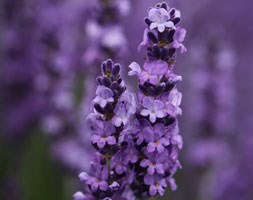
Lavandula angustifolia ‘Elizabeth’ (lavender) £4.99
Position: full sun Soil: moderately fertile, well-drained soil Rate of growth: average Flowering period: July to September Hardiness: fully hardy A new variety, with dense spikes of shocking violet flowers in late summer that shine out among aromatic, silvery-grey leaves. It’s fairly compact, so makes a gorgeous, informal flowering hedge, especially for edging a path and border, and brushing against it releases its heady fragrance. The flower-spikes are highly attractive to bees and other beneficial insects. Garden care: Cut back the stalks after the flowers have faded to retain a compact shape. Carefully trim back in April, taking care not to cut into old wood.
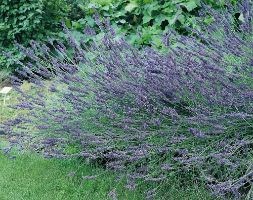
Lavandula x intermedia ‘Grosso’ (lavender) £4.99
Position: full sun Soil: moderately fertile, well-drained soil Rate of growth: vigorous Flowering period: July to August Hardiness: fully hardy This vigorous English lavender produces masses of slender spikes of vivid violet flowers between July and August, above grey-green leaves. It makes a gorgeous, flowering, informal hedge, especially along a path, where its fragrance can be appreciated. It works well in a Mediterranean garden, or clipped into a formal sphere for a contemporary look. The flower-spikes are also a magnet for bees and other nectar-loving insects. Garden care: Cut back the stalks after the flowers have faded to retain a compact shape. Carefully trim back in April, taking care not to cut into old wood.
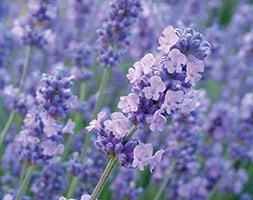
Lavandula angustifolia Melissa Lilac (‘Dow4’) (PBR) (lavender) £4.99
Position: full sun Soil: moderately fertile, well-drained soil Rate of growth: average Flowering period: July to September Hardiness: fully hardy Stunning, large, violet-coloured, fragrant flower spikes appear in summer above slender, aromatic, silvery-grey leaves. This is a lovely lavender for edging paths and borders; the aromatic foliage perfumes the air if you brush against it. It also works well in a gravel garden, or clipped into a formal sphere for a contemporary look. The flower-spikes are highly attractive to bees and other beneficial insects. Garden care: Cut back the stalks after the flowers have faded. Carefully trim back in April, taking care not to cut into old wood.
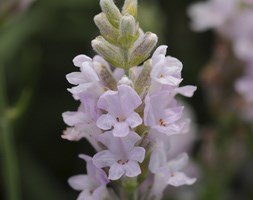
Lavandula angustifolia ‘Ellagance Pink’ (lavender) £2.49
Position: full sun Soil: moderately fertile, well-drained soil Rate of growth: average Flowering period: July to September Other features: grey-green, aromatic leaves Hardiness: fully hardy Useful for a pot or the front of a shrub border, this low-growing, aromatic shrub has a naturally bushy habit, which also makes it suitable for low hedges. The larger than average, blush pink flowers appear in the plants first year. Garden care: Cut back the stalks after the flowers have faded. Carefully trim back in April, taking care not to cut into old wood.






